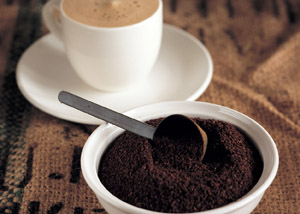Introduction to the varieties of Grinding scale of Brazilian Coffee Bean planting Base Map Flavor description processing method
Introduction to the varieties of Grinding scale of Brazilian Coffee Bean planting Base Map Flavor description processing method
The Brazilian Special Coffee Association (BSCA), which has many of Brazil's most important regional members, represents the interests of the world's top coffee growers and the most advanced coffee production technology. In Missouri, for example, production has soared in the central region of Serrado over the past few years. Here, the vast Datterra plantation is not only the largest plantation in the world, but also a benchmark for producing high-quality coffee. Traditional coffee plantations in the south of the state, such as Lapanema, Alfenas and Vista Allegre, also regularly produce some of the region's top coffee.
Delicious, sweet, full-grained coffee the Dominican Republic (Dominican Republic) is next to Haiti, and both own the island of Hispaniola (Hispaniola). Like its neighbours, the Dominican Republic had a history of revolution and poverty, but now it has democratic elections and the country is relatively stable. Coffee was grown in the Dominican Republic in the early 18th century and is best produced in the Barahona region of the southwest, but Juncalito and Ocoa also produce a fine coffee, Santo Domingo coffee, which is characterized by freshness and elegance, fullness, excellent acidity and pleasant aroma, so it is worth it. Unlike coffee produced in Haiti, most of the coffee grown in the Dominican Republic has been washed, which is a symbol of high quality. Good coffee production has been affected by natural disasters. These islands in the Caribbean used to be an important producer of coffee. In 1789, more than 1 million coffee trees on 500 hectares of land produced 4000 tons. Today, only 150 hectares of land is used to grow coffee. This decline can be attributed to the increase in sugar cane and banana production and the destruction of coffee trees by Hurricane Hurricane Ines in 1996. Political reasons include the redistribution of land from 1962 to 1965, which resulted in huge losses in coffee production. Coffee cultivation takes more man-hours and more money than bananas and sugar cane. Guadeloupe used to be the best producer of coffee, but now it is no longer exported. Bonifieur is rated as the best quality coffee in the area, a name that used to be proud of in coffee history.

Important Notice :
前街咖啡 FrontStreet Coffee has moved to new addredd:
FrontStreet Coffee Address: 315,Donghua East Road,GuangZhou
Tel:020 38364473
- Prev

Introduction of Coffee Bean Flavor description Grinding scale Variety production area in Cochell Manor, Ethiopia
Ethiopia Cochel Manor Coffee Bean Flavor description Grinding scale Variety production area Yejaschuffe itself is a small town of about 20, 000 people, with three neighboring small producing areas of Wenago, Kochere and Gelena Abaya, because the flavor of the coffee produced is almost the same as that of Yejasuffe, so it is also classified into the Yejaschafe area. Yega snow caffeine, whether it's Wen.
- Next

Introduction to the Grinding scale of the Flavor description treatment method for the producing area of Ethiopian Coffee Bean
Ethiopian coffee bean variety Shaquiso producing area flavor description method grinding scale introduction, because it is a new coffee bean, high water content, so it needs a deeper baking degree, roasted to the city using low heat to bake city, the surface is slightly out of oil, the beans are brown. After baking, Gemma feels crisp and loose after grinding, but it takes a long time to finish the last point.
Related
- Detailed explanation of Jadeite planting Land in Panamanian Jadeite Manor introduction to the grading system of Jadeite competitive bidding, Red bid, Green bid and Rose Summer
- Story of Coffee planting in Brenka region of Costa Rica Stonehenge Manor anaerobic heavy honey treatment of flavor mouth
- What's on the barrel of Blue Mountain Coffee beans?
- Can American coffee also pull flowers? How to use hot American style to pull out a good-looking pattern?
- Can you make a cold extract with coffee beans? What is the right proportion for cold-extracted coffee formula?
- Indonesian PWN Gold Mandrine Coffee Origin Features Flavor How to Chong? Mandolin coffee is American.
- A brief introduction to the flavor characteristics of Brazilian yellow bourbon coffee beans
- What is the effect of different water quality on the flavor of cold-extracted coffee? What kind of water is best for brewing coffee?
- Why do you think of Rose Summer whenever you mention Panamanian coffee?
- Introduction to the characteristics of authentic blue mountain coffee bean producing areas? What is the CIB Coffee Authority in Jamaica?

